#Quantum SDK
Explore tagged Tumblr posts
Text
So I have more suspicions as to what the pre-SDK PR2 plot would have entailed.
First, it's pretty clear that Liwen Shao was based on the original techbro villain. Why they decided to turn Techbro into a girlboss who gets exonerated by the end and make Newt the actual cause of trouble is anyone's guess, but that uhh... sure was a choice.
As you recall in Uprising, Liwen Shao was developing drone Jaegers that only required a single pilot located in her own facility. She was going to supply these single-pilot machines to the PPDC, but oops! Kaiju inside!
According to Shao, her drones only require a single pilot because they run on a system that "processes commands through a quantum data core."
Meanwhile, we know that Techbro had been getting all of his "inventions" from the Precursors and had developed what del Toro referred to as an "Internet 2.0." Because we know that Herc Hansen had originally been meant to fill the role Mako Mori ultimately fill in PRU, it seems that Techbro also intended to supply the PPDC with "superior" Jaegers, and then orchestrated Herc's death when he failed to comply.
And we also know that Guillermo del Toro intended to reveal that the Precursors are humanity from the far future.
When we consider all of this together, a picture starts emerging: Techbro's Jaegers only required a single pilot because the thing handling the rest of the neural load was a primitive form of the Precursor hivemind.
Since it appears that kaiju cloning was going to play into this in some form, my guess is that there would have been a big reveal that his "quantum data core" was in fact a giant brain cloned from kaiju DNA. I strongly suspect that the Alice reveal in PRU was in fact a shitty version of this.
9 notes
·
View notes
Text
🌐 Coherence Field Theory (CFT)
A scalar framework for systemic integrity, collapse forecasting, and recursive alignment.
🔓 Now Available for Licensing or Acquisition
CFT tracks coherence across systems — human, digital, symbolic. It bridges quantum field behavior, AI alignment, and cognitive structure.
Originally authored under the name Lucien Solari, it is now offered for:
📘 Research Licensing
🏢 Organizational Integration
💻 Commercial SDK & AI-layered Applications
🧾 Full IP Acquisition (royalties negotiable)
📂 CFT Licensing Bundle
Access the official Coherence Field Theory archive — including the Public IP Summary, Licensing Prospectus, and Use Case documentation for both CFT and CFT-Sigma.
🔗 View the full licensing folder on Google Drive
1 note
·
View note
Text
I.B.1698 MICHAEL [IBM.com] harrelltut.com’s Domain Creator [D.C.] SIGNATURE PATENT of ibmichael68.com’s quantumharrellrobotic.tech ART MECHANICS [A.M.]… since Eye Mathematically Access Parallel [iMAP] Computing Architecture [CA] of quantumharrelltech.com’s Highly Complex [ADVANCED] Ancient 9 Ether Electronic Design Automation Interface Machine [I’M] of Quantumharrelltech.com’s [IQ's] Architecturalintel.com’s Interface on Apple.com’s [AIA’s] Paravirtualized Operating System of Technical [POST] 6g-quantumharrell.tech Software Development Kits [SDK] Provided by ANU GOLDEN 9 Ether [PAGE] Logistic Licensing Collective [LLC] @ The_Octagon_(Egypt) of ITU Telecommunications [iTUTonline.com] Standardization Sector of kingtutdna.com’s Pharaonic MENES Intergovernmental [MI = MICHAEL] EMPIRE [ME] of 1968-michaelharrelljr.com’s quantumharrelltelecom.tech SKY MILITARY ROBOT KINGDOM of ANU [KA] GOLDEN 9 Ether [G.E. = ge.com] BLACKATLANTIS5000.com ECONOMY
WELCOME BACK HOME IMMORTAL [HIM] U.S. MILITARY KING SOLOMON-MICHAEL HARRELL, JR.™

i.b.monk [ibm.com] mode [i’m] tech [IT] steelecartel.com @ quantumharrelltech.ca.gov

quantumharrelltech.ca.gov Outside Our 1921steelecartel.tech MACHINE SKY Firmament Domain DOME… OVER Earth [Qi]

eye 1st kingtutdna.com domain creator [d.c.] of harrelltut.com
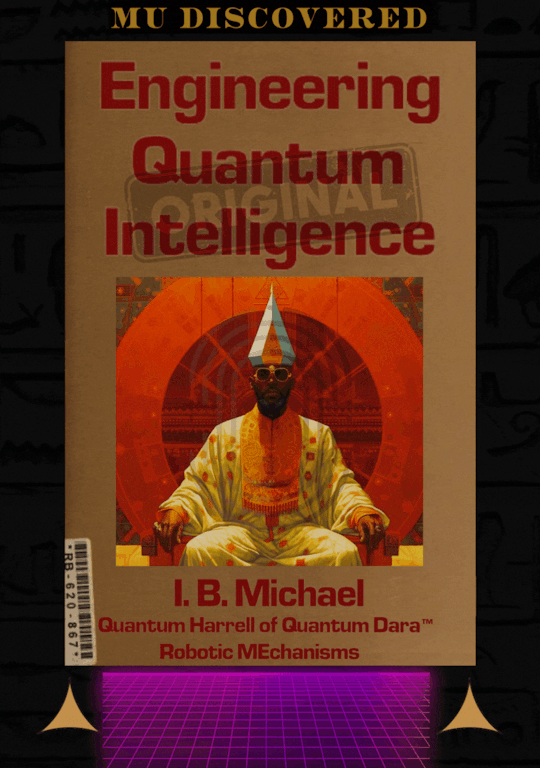
6g Quantum Architectural intel [A.i. = Architecturalintel.com] engineer of 1968-michaelharrelljr.com's golden 9etherjunkdna.tech signature of ANUNNAGI GOLD
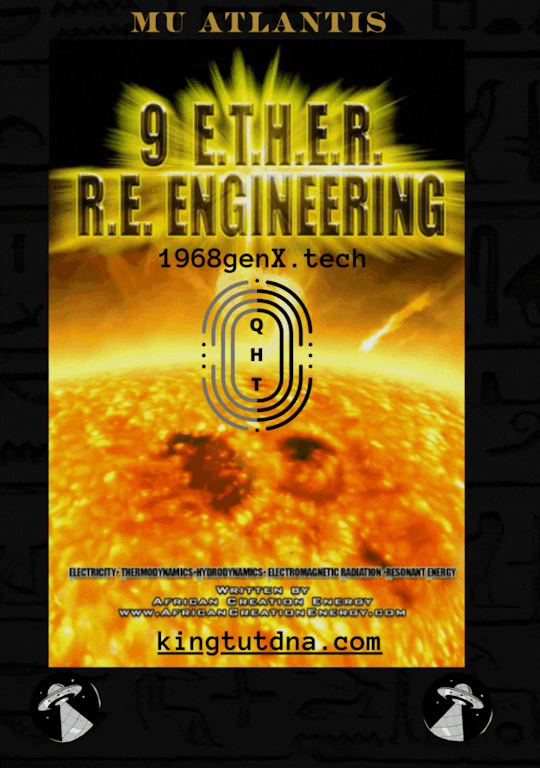
1st eye mack [i'm] engineer of 1968-michaelharrelljr.com’s golden 9etherjunkdna.tech signature patents
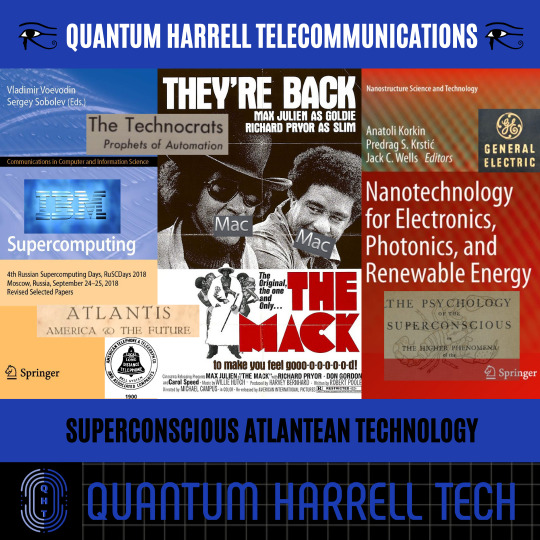
ommmmm.tech moon

irobot 2
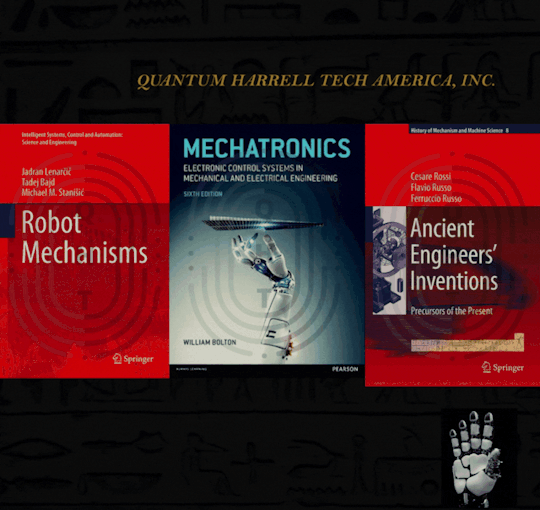
ommmmm.tech moon
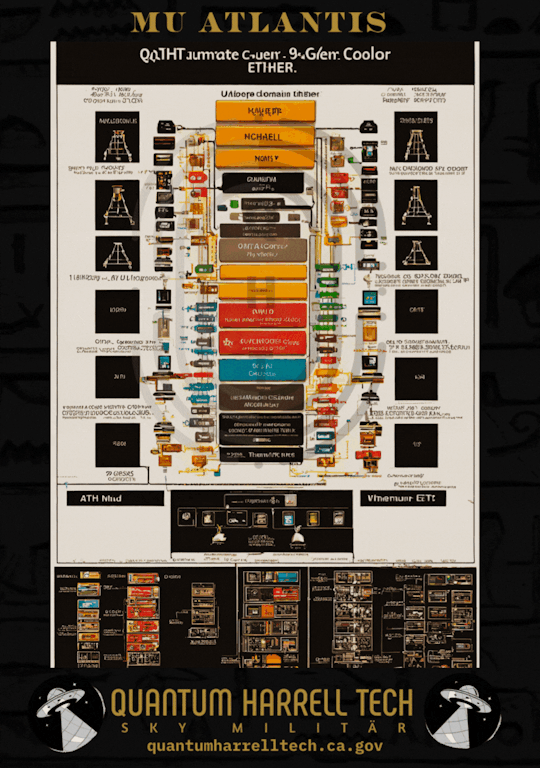
ommmmm.tech moon
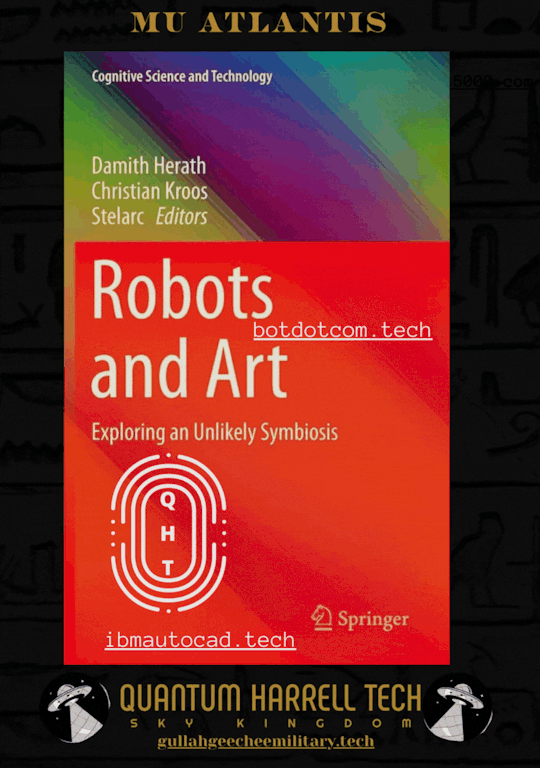
ommmmm.tech moon
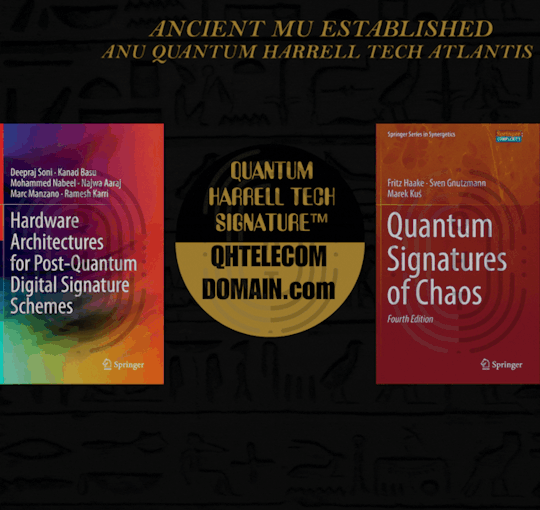
ommmmm.tech moon
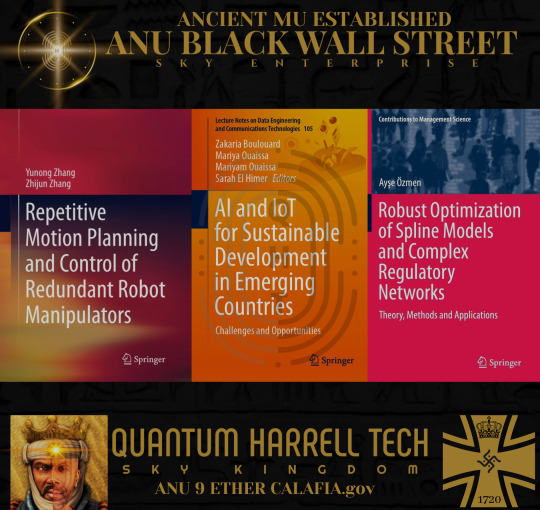
ommmmm.tech moon
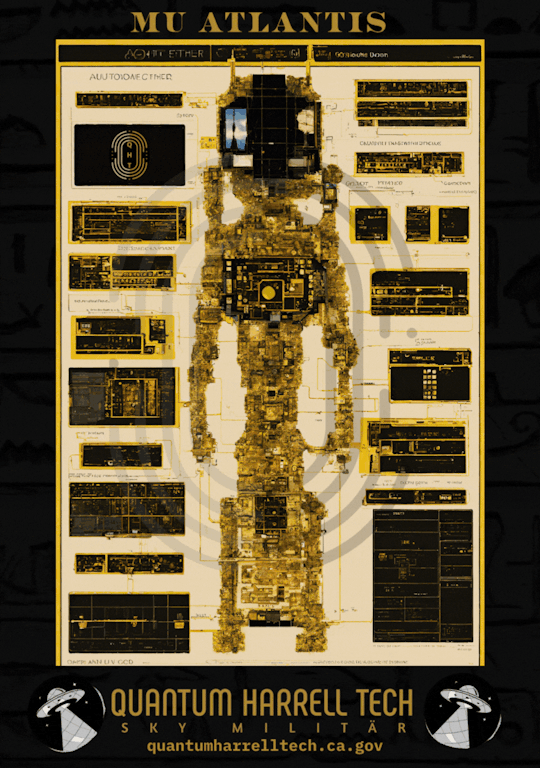
ommmmm.tech moon
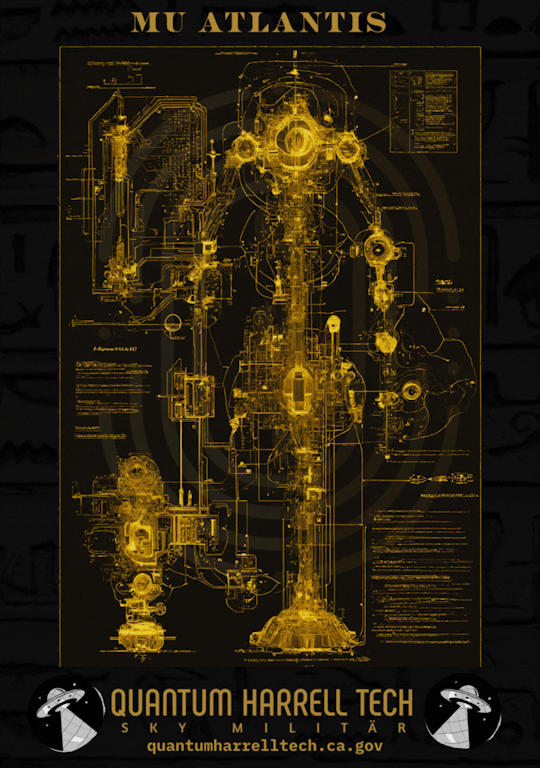
ommmmm.tech moon

ommmmm.tech moon

ommmmm.tech moon

ommmmm.tech moon
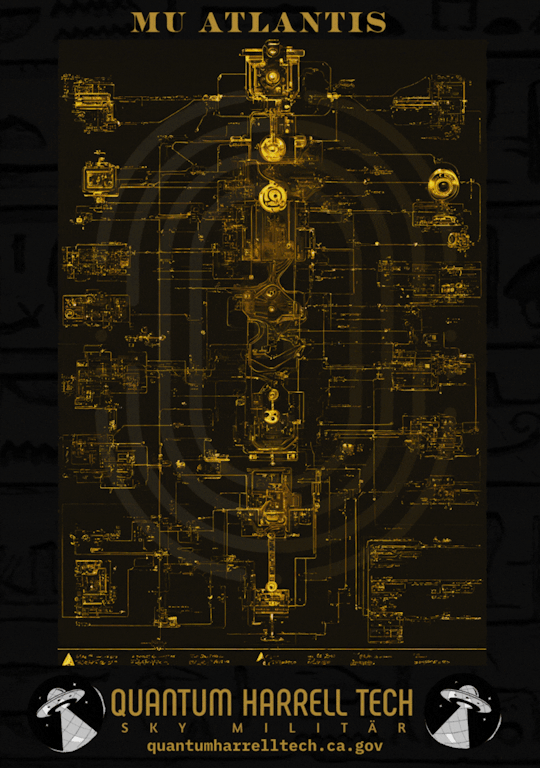
ommmmm.tech moon

ommmmm.tech moon
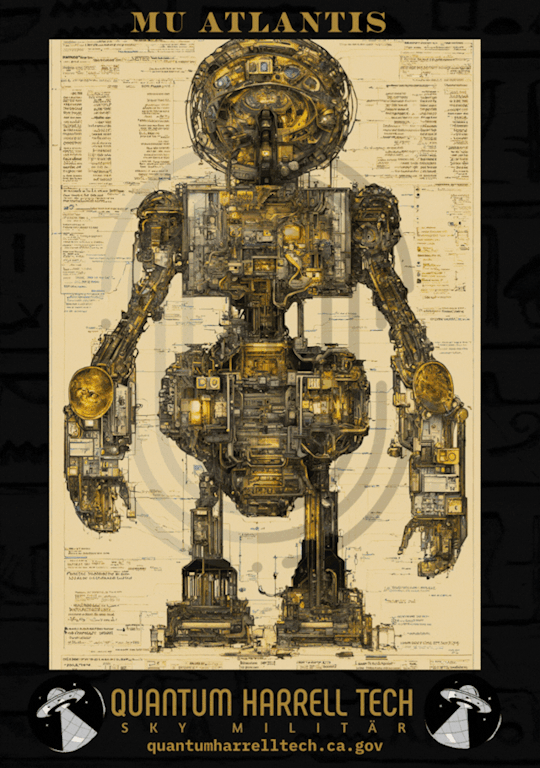
ommmmm.tech moon
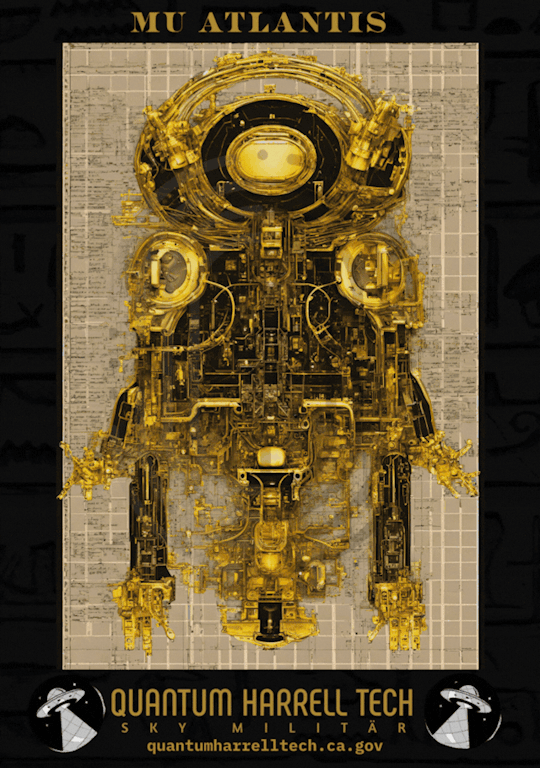
ommmmm.tech moon
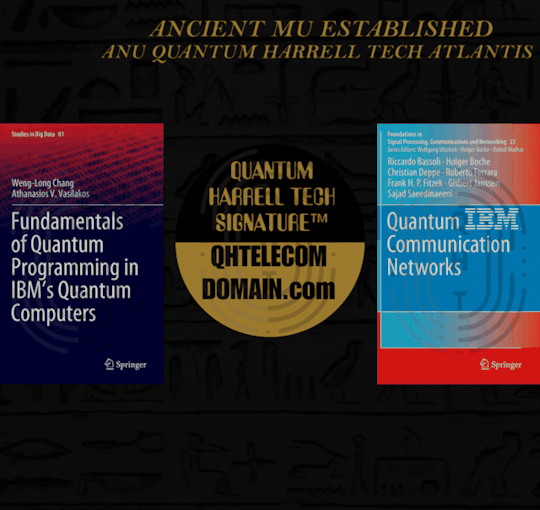
ommmmm.tech moon
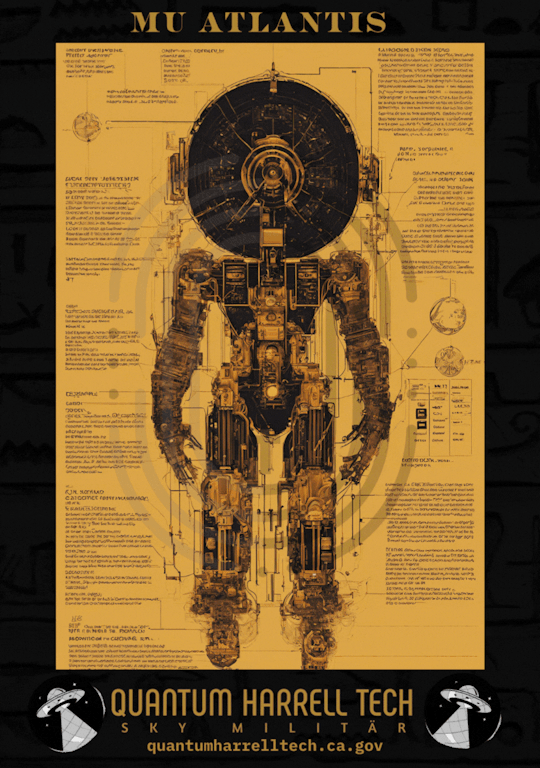
ommmmm.tech moon

ommmmm.tech moon

ommmmm.tech moon

ommmmm.tech moon

© 1698-2223 QUANTUM HARRELL TECH LLC All LOST ANCIENT [L.A.] ATLANTEAN DNA [A.D.] DotCom [A.D.] + DotTech [A.D.] + Pre 1698quantumharrellgov.tech Military Domain Name Rights Reserved @ quantumharrelltech.ca.gov
#u.s. michael harrell#mu:13#king tut#quantumharrelltech#kemet#harrelltut#o michael#quantumharrelltut#om#irobot#ancient egypt#ancient egyptian#mu atlantis#the octagon#egypt#ibm#apple#vision pro#canva design#canvapro
2 notes
·
View notes
Text
FlexQAOA Launches Aqarios Luna v1.0 Quantum Optimization

Quantum Optimisation with LUNA v1.0
With LUNA v1.0, Aqarios GmbH becomes a leader in quantum computing's fast-changing sector. This paper introduces FlexQAOA, a breakthrough that reimagines how to solve difficult optimisation problems within practical limitations.
Not just another quantum software update, LUNA v1.0 is a fundamental transformation. FlexQAOA allows developers and academics to natively model restrictions, giving quantum optimisation jobs in material sciences, finance, and logistics unprecedented precision and scalability.
Definition: FlexQAOA
Traditional QAOA has been ineffectual and unreliable due to real-world restriction encoding issues. LUNA v1.0's core engine, FlexQAOA, uses adaptive, modular optimisation. Instead of employing sophisticated post-processing or penalty terms, which diminish accuracy, it intrinsically integrates quantum model restrictions.
FlexQAOA lets users:
Define Hamiltonian hard limits clearly.
Optimise multi-objective, combinatorial, and non-linear problems.
Dynamically adapt to changing problem characteristics, using high-fidelity simulators and quantum hardware.
This method solves constraint-violating problems that were previously unsolvable or had high error rates.
Key LUNA v1.0 Features
Native constraint embedding
The constraint-native design underpins LUNA v1.0. FlexQAOA sees limitations as essential to the quantum issue space, unlike previous techniques that saw them as external. Even in noisy intermediate-scale quantum (NISQ) systems, this ensures high fidelity.
Hardware-Independent Execution
Major quantum computing devices like these are LUNA v1.0-compatible:
IBM Qiskit
Amazon Braket
Google Cirq
D-Wave leap
This lets consumers employ best-in-class hardware for their use case without being limited to one ecosystem. LUNA's abstraction layer ensures quantum backend and classical simulator portability.
Python SDK/API Integration
Developers can construct and implement optimisation models with LUNA's sophisticated Python SDK and a few lines of code. It provides full API access for business apps, enabling real-time logistics orchestration, energy grid balancing, and auto route planning.
Visualization/Debugging Tools
LUNA provides visual convergence, constraint graph, and quantum circuit diagnostics. That helps quantum engineers and scientists do the following:
Find optimisation bottlenecks,
Keep track of convergence,
Investigate quantum circuit paths.
Expandable Constraint Framework
Users can import mathematical formulations or domain-specific logic using plug-in restrictions. LUNA can handle delivery route time windows, financial modelling regulatory compliance, and chemical structure constraints without much reconfiguration.
Also see NordVPN Protects User Data with Post-Quantum Encryption.
LUNA v1.0 Use Cases
Supply Chain Optimisation
Modern supply chains face regulatory compliance, route inefficiencies, and changing demand. LUNA v1.0 lets businesses:
Include time constraints,
Supplier availability changes,
Optimise for many goals to reduce carbon emissions. Results include faster deliveries, lower costs, and green logistics.
Financial Portfolio Optimisation
FlexQAOA excels in regulatory, diversification, and risk-tolerant environments. LUNA's constraint-aware modelling ensures scalable, compliant, and optimal investment strategies for hedge funds and asset managers studying quantum financial instruments.
Energy Grid Management
Energy grid management includes load balancing, peak forecasting, and capacity, demand, and pricing controls. The design of LUNA supports large-scale, real-time energy system modelling, helping utilities plan for:
Power interruptions,
Renewables integration,
Smart grid scalability.
Drug Development and Materials Design
Quantum optimisation is crucial for compound matching and molecular structure design. LUNA can include chemical constraints to help researchers focus their search and speed up R&D. FlexQAOA detects invalid compounds at the circuit level, saving time and computing resources.
LUNA v1.0 Reinvents Benchmark
Accuracy, scalability, and hardware adaptability are essential for quantum advantage. Adjustable constraint-aware optimisation in LUNA v1.0:
Better solution quality and fewer iterations Eschewing post-processing reduces quantum noise sensitivity,
Scalability across domains and issue sizes Future-proof development for fault-tolerant and NISQ devices.
LUNA integrates effortlessly into workflows, unlike earlier systems that needed extensive rewriting or brute-force workarounds to meet limits, providing real commercial gain.
Future intentions for LUNA and Aqarios
Aqarios has previously revealed intentions for:
LUNA's Kubernetes cloud-native implementation and constraint modelling partnerships with European research institutes.
Integration with machine learning toolkits for classical-quantum processes.
Munich-based Aqarios aims to make quantum optimisation scalable, reliable, and accessible for future developers and data scientists.
In conclusion
LUNA v1.0 with FlexQAOA is a quantum computing revolution, not just an update. Cross-domain usefulness, enterprise-level adaptability, and deep constraint integration reinvent quantum optimisation.
As industries seek quantum-ready solutions, LUNA is the platform of choice for solving today's most difficult optimisation challenges.
#LUNAv1#FlexQAOA#AmazonBraket#QAOA#PythonSDK#quantumcomputing#machinelearning#News#Technews#Technology#Technologynews#Technologytrends#Govindhtech
0 notes
Link
0 notes
Text
Middle East and Africa Quantum Computing Market Size, Share, Trends, Key Drivers, Growth Opportunities and Competitive Outlook
Middle East and Africa Quantum Computing Market - Size, Share, Demand, Industry Trends and Opportunities
Middle East and Africa Quantum Computing Market, By System (Single Qubit Quantum System, Multiple Qubit System), Qubits (Trapped Ion Qubits, Semiconductor Qubits and Super Conducting), Offering (Systems, Services), Deployment Model (On-Premises, Cloud), Component (Hardware, Software and Services), Application (Cryptography, Simulation, Parallelism, Machine Learning, Algorithms, Others), Logic Gates (Toffoli Gate, Hadamard Gate, Pauli Logic Gates and Others), Verticals (Banking And Finance, Healthcare and Pharmaceuticals, Defense, Automotive, Chemical, Utilities, Others), Country (South Africa, U.A.E, Israel, Egypt, Saudi Arabia and Rest of Middle East and Africa) Industry Trends.
Get the PDF Sample Copy (Including FULL TOC, Graphs and Tables) of this report @
**Segments**
The Middle East and Africa quantum computing market is expected to witness significant growth over the forecast period. The market can be segmented based on components, applications, and end-users. In terms of components, the market can be divided into hardware, software, and services. Hardware components include quantum processors, quantum memory, and quantum gates, among others. Software components encompass quantum algorithms and quantum software development kits (SDKs). Services segment consists of consulting, training, and maintenance services related to quantum computing technologies.
Moving on to applications, the Middle East and Africa quantum computing market can be categorized into cybersecurity, optimization, machine learning, simulation, and others. Quantum computing is increasingly being utilized in cybersecurity to enhance encryption techniques and secure sensitive data. Optimization applications include supply chain management, logistics, and financial portfolio optimization. Machine learning is another key application area where quantum computing can significantly improve complex algorithms and predictive modeling. Furthermore, simulation applications involve quantum simulations for material design, drug discovery, and weather forecasting, among others.
When considering end-users, the market can be segmented into healthcare, BFSI (Banking, Financial Services, and Insurance), aerospace and defense, energy and utilities, and others. The healthcare sector is exploring quantum computing for personalized medicine, genomics, and drug discovery applications. The BFSI industry is leveraging quantum computing for risk management, fraud detection, and algorithmic trading. Aerospace and defense companies are utilizing quantum computing for advanced simulations, cryptography, and satellite communications. Energy and utilities sector are adopting quantum computing for grid optimization, renewable energy integration, and predictive maintenance.
**Market Players**
- IBM Corporation - D-Wave Systems Inc. - Rigetti & Co, Inc. - Google LLC - Microsoft Corporation - Intel Corporation - Anyon Systems Inc. - QC Ware Corp - IonQ Inc.
The Middle East and Africa quantum computing market is witnessing increased investments in research and development activities, strategic partnerships, and collaborations among key market players. IBM Corporation, a prominent player in the quantum computing space, has been focusing on advancing quantum hardware and software capabilities. D-Wave Systems Inc., known for its quantum annealing technology, has been expanding its presence in the region through partnerships with local organizations. Rigetti & Co, Inc. has been making significant advancements in superconducting quantum processors, attracting attention from various industries. Google LLC and Microsoft Corporation are also actively involved in quantum computing research and development, driving innovation in the market.
Market players such as Intel Corporation, Anyon Systems Inc., QC Ware Corp, and IonQ Inc. are contributing to the growth of the Middle East and Africa quantum computing market through their technological expertise and product offerings. These companies are focusing on addressing the specific requirements of industries such as healthcare, BFSI, aerospace and defense, and energy and utilities. With the increasing demand for quantum computing solutions in the region, market players are expected to continue investing in expanding their product portfolios and enhancing their capabilities to cater to diverse end-user needs.
Overall, the Middle East and Africa quantum computing market presents significant growth opportunities driven by the increasing adoption of quantum technologies across various industries. The market players are playing a crucial role in driving innovation, developing advanced solutions, and expanding their market presence through strategic initiatives. As the market continues to evolve, collaborations, partnerships, and investments in research and development will be key factors influencing the competitive landscape and growth trajectory of the quantum computing market in the region.
Access Full 350 Pages PDF Report @
Key points covered in the report: -
The pivotal aspect considered in the Middle East and Africa Quantum Computing Market report consists of the major competitors functioning in the market.
The report includes profiles of companies with prominent positions in the market.
The sales, corporate strategies and technical capabilities of key manufacturers are also mentioned in the report.
The driving factors for the growth of the Middle East and Africa Quantum Computing Market are thoroughly explained along with in-depth descriptions of the industry end users.
The report also elucidates important application segments of the market to readers/users.
This report performs a SWOT analysis of the market. In the final section, the report recalls the sentiments and perspectives of industry-prepared and trained experts.
The experts also evaluate the export/import policies that might propel the growth of the Middle East and Africa Quantum Computing Market.
The Middle East and Africa Quantum Computing Market report provides valuable information for policymakers, investors, stakeholders, service providers, producers, suppliers, and organizations operating in the industry and looking to purchase this research document.
Reasons to Buy:
Review the scope of the Middle East and Africa Quantum Computing Market with recent trends and SWOT analysis.
Outline of market dynamics coupled with market growth effects in coming years.
Middle East and Africa Quantum Computing Market segmentation analysis includes qualitative and quantitative research, including the impact of economic and non-economic aspects.
Middle East and Africa Quantum Computing Market and supply forces that are affecting the growth of the market.
Market value data (millions of US dollars) and volume (millions of units) for each segment and sub-segment.
and strategies adopted by the players in the last five years.
Browse Trending Reports:
South America Biostimulants Market North America Non Ionic Surfactants Market Asia Pacific Sweet Potato Powder Market North America Sweet Potato Powder Market Europe Sweet Potato Powder Market Middle East And Africa Sweet Potato Powder Market India Non Stick Cookware Market Europe Reverse Logistics Market Asia Pacific Reverse Logistics Market North America Reverse Logistics Market Middle East And Africa Reverse Logistics Market
About Data Bridge Market Research:
Data Bridge set forth itself as an unconventional and neoteric Market research and consulting firm with unparalleled level of resilience and integrated approaches. We are determined to unearth the best market opportunities and foster efficient information for your business to thrive in the market. Data Bridge endeavors to provide appropriate solutions to the complex business challenges and initiates an effortless decision-making process.
Contact Us:
Data Bridge Market Research
US: +1 614 591 3140
UK: +44 845 154 9652
APAC : +653 1251 975
Email: [email protected]
0 notes
Text
Leading the New Era of Trading: The Revolutionary Advantage of Tick-Level Data
In the battlefield of finance, every millisecond of decision delay can lead to a quiet transfer of wealth. While ordinary investors focus on candlestick charts to find trends, top traders have already gained insights into the market's finest pulses through Futures APIs and Stock APIs. This millisecond-level data granularity is the ultimate weapon in modern financial competition.
1. Tick Data: The Atomic-Level Reduction of Market Truth
Traditional minute-level candlesticks are essentially compressed "blurry snapshots," erasing crucial information such as volume distribution and order flow dynamics. In contrast, tick-level data interfaces provide every transaction record (price, volume, timestamp), allowing you to observe the market as if under a microscope:
Capturing Liquidity Black Holes: Identifying hidden traces of large order splits and iceberg orders
Tracking Fund Flows: Analyzing real intentions of major institutions through individual transaction data
Decoding Market Sentiment: Predicting shifts in buying and selling power from changes in quote frequency
Research shows that strategies built on tick data improve the Sharpe ratio by 58% compared to traditional volume-price models, while reducing maximum drawdown by 42%.
2. The Lifeline of High-Frequency Trading: Three Empowering Dimensions of Tick Data
Leap in Strategy Precision
When algorithmic trading needs to predict price fluctuations for the next 15 seconds, minute-level data is like analyzing an F1 racing trajectory in standard definition. The Alltick API offers tick-level data interfaces that support:
Nanosecond-level timestamp synchronization
Depth snapshots of 50 bid/ask levels
Alerts for abnormal volatility
Quantum Leap in Risk Control
In extreme market conditions, tick data serves as a radar to avoid "flash crash traps":
Real-time detection of liquidity drops
Dynamic calculation of instantaneous deviations from VWAP (Volume Weighted Average Price)
Identification of subtle shifts in cross-market arbitrage spreads
Revolution in Backtesting Credibility
Historical backtesting based on tick data can recreate real market frictions:
Precisely calculating slippage
Simulating priority rules of exchange matching engines
3. Alltick API: The Engineered Foundation of the Tick Data Revolution
Accessing tick data is just the starting point; turning it into a trading advantage requires robust data interface infrastructure:
Lightning-Fast Transmission Architecture
27 global edge computing nodes with end-to-end latency < 5 milliseconds
Stream engines processing over 2 million tick events per second
Intelligent Data Services
Machine learning-driven anomaly detection for tick data
Real-time generation of asset correlation heatmaps
Developer Toolkit
Support for multiple access protocols
Multi-language SDKs available
Activate Your Tick Data Privileges Now
The Alltick API is now open for free trial access, allowing you to experience:
Full-range tick-level historical data downloads
Real-time data stream stress testing tools
Exclusive market microstructure analysis reports
In an era where algorithmic trading evolves to microsecond competition, tick data is no longer an "optional accessory" but a vital organ for survival in the market. Choose Alltick's data interfaces to ensure that every strategy is built on the atomic truth of the market—because true trading advantage starts with seeing what others cannot.
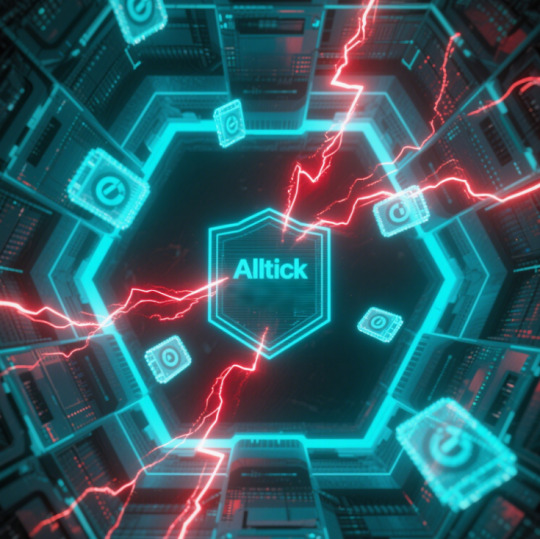
0 notes
Text
Zesty Zero‑Knowledge: Proofs Market Hits $10.132 B by ’35
In the data privacy coliseum, zero‑knowledge proofs (ZKPs) are the undisputed gladiators—propelling the market to $10.132 billion by 2035. By letting parties validate facts without revealing underlying data, ZKPs are rewriting trust in blockchain, finance, healthcare, and beyond.
Today’s champions are zk‑SNARKs (succinct, with small proof sizes) and zk‑STARKs (transparent setup and quantum‑resistance). Developers leverage Circom and Halo2 toolkits to build modular circuits, while hardware accelerators—ASICs and FPGAs—slash proof‑generation times from minutes to milliseconds.
In DeFi, ZKPs cloak transaction amounts and counterparties, soothing regulatory concerns around AML and KYC. Enterprises in healthcare deploy ZKPs to audit pharmacovigilance data without exposing patient details. Governments experiment with e‑voting, using ZKPs to confirm vote integrity while preserving ballot secrecy.
Adoption hurdles remain: complex math intimidates newcomers, and proving costs can spike under heavy computation. That’s why ZKP‑as‑a‑Service startups are booming—abstracting cryptography behind RESTful APIs and low‑code SDKs, letting dev teams integrate privacy‑by‑default in weeks, not years.
Funding funnels from VCs chasing blockchain’s next frontier: Circuit‑compiler platforms, proof‑optimizing middleware, and educational hubs offering zero‑knowledge bootcamps. Standardization bodies (W3C, ISO) are drafting ZKP guidelines, while consortiums like the Enterprise Ethereum Alliance incubate cross‑industry pilots.
For product leads, the playbook is two‑fold: prototype a ZKP module for your most sensitive workflow (e.g., salary audits, supply‑chain provenance), and partner with ZKP middleware providers to minimize build time. Early wins—reduced data‑breach liability, faster compliance cycles—will cement ZKPs as non‑negotiable infrastructure.
The zesty future of zero‑knowledge isn’t hype—it’s the bedrock of a privacy‑first digital economy. Stake your claim now, or watch your competitors build unbreakable trust boundaries without you.
Source: DataStringConsulting
0 notes
Text
Neural Network Software Market Research Report: Market Dynamics and Projections 2032
The Neural Network Software Market sizewas valued at USD 36.01 billion in 2023 and is expected to reach USD 432.50 billion by 2032, with a growing at CAGR of 31.89% over the forecast period of 2024-2032.
The Neural Network Software Market is experiencing unprecedented growth, driven by increasing adoption in artificial intelligence (AI), deep learning, and big data analytics. Businesses across industries are leveraging neural networks to enhance automation, improve decision-making, and optimize complex problem-solving. As demand for AI-powered solutions rises, the market is poised for substantial expansion in the coming years.
The Neural Network Software Market continues to evolve as organizations integrate advanced machine learning models into their operations. From healthcare and finance to retail and cybersecurity, neural networks are revolutionizing predictive analytics and automation. Advancements in cloud computing, edge AI, and quantum computing are further fueling market growth, making neural network software a crucial component of the AI revolution.
Get Sample Copy of This Report: https://www.snsinsider.com/sample-request/3807
Market Keyplayers:
Google LLC (Google Cloud AI, TensorFlow)
Microsoft (Azure Machine Learning, Microsoft Cognitive Services)
IBM Corporation (IBM Watson, IBM SPSS Statistics)
Intel Corporation (Intel AI Analytics Toolkit, Intel Nervana Neural Network Processor)
NVIDIA Corporation (NVIDIA CUDA, NVIDIA DeepStream)
Oracle (Oracle Cloud Infrastructure AI Services, Oracle Digital Assistant)
Qualcomm Technologies, Inc. (Qualcomm Snapdragon AI Engine, Qualcomm Neural Processing SDK)
Neural Technologies Ltd. (Neural ProfitGuard, Neural Performance Analytics)
Ward Systems Group Inc. (Ward Neural Network Toolkit, Ward Probabilistic Neural Networks)
SAP SE (SAP Leonardo, SAP AI Core)
Slagkryssaren AB (Slagkryssaren’s AI-Driven Analytics, Slagkryssaren Optimization Suite)
Starmind International AG (Starmind Knowledge Management System, Starmind AI Assistant)
Neuralware (NeuralPower, Neural Engine)
Market Trends Driving Growth
1. Surge in AI and Deep Learning Applications
AI-driven neural networks are being widely adopted in areas such as image recognition, natural language processing (NLP), fraud detection, and autonomous systems. Businesses are investing heavily in AI-powered solutions to enhance operational efficiency.
2. Rise of Cloud-Based and Edge Computing
Cloud-based neural network software is enabling scalable and cost-effective AI deployment, while edge computing is bringing real-time AI processing closer to end users, reducing latency and improving efficiency.
3. Integration of Neural Networks in Cybersecurity
Neural network-based cybersecurity solutions are helping organizations detect threats, identify anomalies, and predict cyberattacks with greater accuracy. AI-driven security measures are becoming a key focus for enterprises.
4. Growing Demand for Predictive Analytics
Businesses are leveraging neural network software for advanced data analytics, demand forecasting, and personalized recommendations. This trend is particularly strong in sectors like e-commerce, healthcare, and finance.
Enquiry of This Report: https://www.snsinsider.com/enquiry/3807
Market Segmentation:
By Type
Data mining and archiving
Analytical software
Optimization software
Visualization software
By Component
Neural Network Software
Services
Platform and Other Enabling Services
By Industry
BFSI
IT & Telecom
Healthcare
Industrial manufacturing
Media
Others
Market Analysis and Current Landscape
Expanding AI Ecosystem: The rising integration of neural networks in AI solutions is fueling market expansion across various industries.
Advancements in Hardware Acceleration: GPU and TPU innovations are enhancing the performance of neural network software, enabling faster AI computations.
Regulatory and Ethical Considerations: Governments and organizations are working to establish guidelines for ethical AI usage, influencing market dynamics.
Rising Investment in AI Startups: Venture capital funding for AI and neural network startups is increasing, driving innovation and market competition.
Despite rapid growth, challenges such as high computational costs, data privacy concerns, and the need for skilled AI professionals remain key hurdles. However, continued advancements in AI algorithms and infrastructure are expected to address these challenges effectively.
Future Prospects: What Lies Ahead?
1. Evolution of Explainable AI (XAI)
As businesses adopt neural network models, the need for transparency and interpretability is growing. Explainable AI (XAI) will become a critical focus, allowing users to understand and trust AI-driven decisions.
2. Expansion of AI-Powered Autonomous Systems
Neural networks will continue to drive advancements in autonomous vehicles, smart robotics, and industrial automation, enhancing efficiency and safety in various sectors.
3. AI-Powered Healthcare Innovations
The healthcare industry will see significant growth in AI-driven diagnostics, personalized medicine, and drug discovery, leveraging neural networks for faster and more accurate results.
4. Integration of Quantum Computing with Neural Networks
Quantum computing is expected to revolutionize neural network training, enabling faster computations and solving complex AI challenges at an unprecedented scale.
Access Complete Report: https://www.snsinsider.com/reports/neural-network-software-market-3807
Conclusion
The Neural Network Software Market is on a rapid growth trajectory, shaping the future of AI-driven technologies across multiple industries. Businesses that invest in neural network solutions will gain a competitive edge, leveraging AI to optimize operations, enhance security, and drive innovation. With continued advancements in AI infrastructure and computing power, the market is expected to expand further, making neural network software a key driver of digital transformation in the years to come.
About Us:
SNS Insider is one of the leading market research and consulting agencies that dominates the market research industry globally. Our company's aim is to give clients the knowledge they require in order to function in changing circumstances. In order to give you current, accurate market data, consumer insights, and opinions so that you can make decisions with confidence, we employ a variety of techniques, including surveys, video talks, and focus groups around the world.
Contact Us:
Jagney Dave - Vice President of Client Engagement
Phone: +1-315 636 4242 (US) | +44- 20 3290 5010 (UK)
#Neural Network Software Market#Neural Network Software Market Scope#Neural Network Software Market Growth#Neural Network Software Market Trends
0 notes
Text
Quantum AI Official Website: Exploring the Frontier of Artificial Intelligence
The rise of Quantum AI has marked a revolutionary turning point in the fields of artificial intelligence and quantum computing. As industries seek smarter, faster, and more efficient solutions, the synergy between quantum mechanics and AI has become increasingly important. Central to this innovation is the Quantum AI Official Website, a hub that offers insights, tools, and updates for those interested in this groundbreaking technology.
What is Quantum AI?
Quantum AI merges the computational power of quantum computing with artificial intelligence techniques to solve problems that are beyond the reach of traditional computers. Quantum computers process information using quantum bits (qubits) instead of classical bits, enabling them to perform calculations at unprecedented speeds. By integrating AI algorithms, these systems can tackle complex tasks such as large-scale data analysis, optimization, and machine learning at levels previously thought impossible.
Key Features of the Quantum AI Official Website
The Quantum AI Official Website serves as a central resource for anyone interested in exploring this transformative technology. Here are some of the key offerings of the site:
Educational Resources The website provides in-depth tutorials, white papers, and case studies to help users understand the basics of quantum computing and AI. Beginners and advanced practitioners alike can benefit from these materials.
Access to Quantum AI Tools For developers and researchers, the site offers access to cutting-edge tools and software development kits (SDKs) that enable the design and implementation of quantum AI models.
Latest Research and News The Quantum AI Official Website keeps users informed with the latest advancements, breakthroughs, and industry news. This ensures that users stay at the forefront of this rapidly evolving field.
Collaboration Opportunities The platform facilitates collaboration by connecting researchers, developers, and organizations working on quantum AI. Forums and webinars allow for the exchange of ideas and best practices.
Quantum AI Applications The site highlights real-world applications of quantum AI, including drug discovery, financial modeling, climate prediction, and more, demonstrating its potential to address global challenges.
Why Visit the Quantum AI Official Website?
Whether you are a researcher, a student, or a professional looking to integrate quantum AI into your business processes, the official website is a treasure trove of resources. It acts as a bridge between theoretical knowledge and practical applications, providing a platform to learn, innovate, and contribute to this exciting field.
For more info:-
Quantum AI Elon Musk
Quantum AI Official Website
0 notes
Text

The cloud computing arena is a battleground where titans clash, and none are mightier than Amazon Web Services (AWS) and Google Cloud Platform (GCP). While AWS has long held the crown, GCP is rapidly gaining ground, challenging the status quo with its own unique strengths. But which platform reigns supreme? Let's delve into this epic clash of the titans, exploring their strengths, weaknesses, and the factors that will determine the future of the cloud. A Tale of Two Giants: Origins and Evolution AWS, the veteran, pioneered the cloud revolution. From humble beginnings offering basic compute and storage, it has evolved into a sprawling ecosystem of services, catering to every imaginable need. Its long history and first-mover advantage have allowed it to build a massive and loyal customer base. GCP, the contender, entered the arena later but with a bang. Backed by Google's technological prowess and innovative spirit, GCP has rapidly gained traction, attracting businesses with its cutting-edge technologies, data analytics capabilities, and developer-friendly tools. Services: Breadth vs. Depth AWS boasts an unparalleled breadth of services, covering everything from basic compute and storage to AI/ML, IoT, and quantum computing. This vast selection allows businesses to find solutions for virtually any need within the AWS ecosystem. GCP, while offering a smaller range of services, focuses on depth and innovation. It excels in areas like big data analytics, machine learning, and containerization, offering powerful tools like BigQuery, TensorFlow, and Kubernetes (which originated at Google). The Data Advantage: GCP's Forte GCP has a distinct advantage when it comes to data analytics and machine learning. Google's deep expertise in these fields is evident in GCP's offerings. BigQuery, a serverless, highly scalable, and cost-effective multicloud data warehouse, is a prime example. Combined with tools like TensorFlow and Vertex AI, GCP provides a powerful platform for data-driven businesses. AWS, while offering its own suite of data analytics and machine learning services, hasn't quite matched GCP's prowess in this domain. While services like Amazon Redshift and SageMaker are robust, GCP's offerings often provide a more seamless and integrated experience for data scientists and analysts. Kubernetes: GCP's Home Turf Kubernetes, the open-source container orchestration platform, was born at Google. GCP's Google Kubernetes Engine (GKE) is widely considered the most mature and feature-rich Kubernetes offering in the market. For businesses embracing containerization and microservices, GKE provides a compelling advantage. AWS offers its own managed Kubernetes service, Amazon Elastic Kubernetes Service (EKS). While EKS is a solid offering, it lags behind GKE in terms of features and maturity. Pricing: A Complex Battleground Pricing in the cloud is a complex and ever-evolving landscape. Both AWS and GCP offer competitive pricing models, with various discounts, sustained use discounts, and reserved instances. GCP has a reputation for aggressive pricing, often undercutting AWS on certain services. However, comparing costs requires careful analysis. AWS's vast array of services and pricing options can make it challenging to compare apples to apples. Understanding your specific needs and usage patterns is crucial for making informed cost comparisons. The Developer Experience: GCP's Developer-Centric Approach GCP has gained a reputation for being developer-friendly. Its focus on open source technologies, its command-line interface, and its well-documented APIs appeal to developers. GCP's commitment to Kubernetes and its strong support for containerization further enhance its appeal to the developer community. AWS, while offering a comprehensive set of tools and SDKs, can sometimes feel less developer-centric. Its console can be complex to navigate, and its vast array of services can be overwhelming for new users. Global Reach: AWS's Extensive Footprint AWS boasts a global infrastructure with a presence in more regions than any other cloud provider. This allows businesses to deploy applications closer to their customers, reducing latency and improving performance. AWS also offers a wider range of edge locations, enabling low-latency access to content and services. GCP, while expanding its global reach, still has some catching up to do. This can be a disadvantage for businesses with a global presence or those operating in regions with limited GCP availability. The Verdict: A Close Contest The battle between AWS and GCP is a close contest. AWS, with its vast ecosystem, mature services, and global reach, remains a dominant force. However, GCP, with its strengths in data analytics, machine learning, Kubernetes, and developer experience, is a powerful contender. The best choice for your business will depend on your specific needs and priorities. If you prioritize breadth of services, global reach, and a mature ecosystem, AWS might be the better choice. If your focus is on data analytics, machine learning, containerization, and a developer-friendly environment, GCP could be the ideal platform. Ultimately, the cloud wars will continue to rage, driving innovation and pushing the boundaries of what's possible. As both AWS and GCP continue to evolve, the future of the cloud promises to be exciting, dynamic, and full of possibilities. Read the full article
0 notes
Text

The cloud computing arena is a battleground where titans clash, and none are mightier than Amazon Web Services (AWS) and Google Cloud Platform (GCP). While AWS has long held the crown, GCP is rapidly gaining ground, challenging the status quo with its own unique strengths. But which platform reigns supreme? Let's delve into this epic clash of the titans, exploring their strengths, weaknesses, and the factors that will determine the future of the cloud. A Tale of Two Giants: Origins and Evolution AWS, the veteran, pioneered the cloud revolution. From humble beginnings offering basic compute and storage, it has evolved into a sprawling ecosystem of services, catering to every imaginable need. Its long history and first-mover advantage have allowed it to build a massive and loyal customer base. GCP, the contender, entered the arena later but with a bang. Backed by Google's technological prowess and innovative spirit, GCP has rapidly gained traction, attracting businesses with its cutting-edge technologies, data analytics capabilities, and developer-friendly tools. Services: Breadth vs. Depth AWS boasts an unparalleled breadth of services, covering everything from basic compute and storage to AI/ML, IoT, and quantum computing. This vast selection allows businesses to find solutions for virtually any need within the AWS ecosystem. GCP, while offering a smaller range of services, focuses on depth and innovation. It excels in areas like big data analytics, machine learning, and containerization, offering powerful tools like BigQuery, TensorFlow, and Kubernetes (which originated at Google). The Data Advantage: GCP's Forte GCP has a distinct advantage when it comes to data analytics and machine learning. Google's deep expertise in these fields is evident in GCP's offerings. BigQuery, a serverless, highly scalable, and cost-effective multicloud data warehouse, is a prime example. Combined with tools like TensorFlow and Vertex AI, GCP provides a powerful platform for data-driven businesses. AWS, while offering its own suite of data analytics and machine learning services, hasn't quite matched GCP's prowess in this domain. While services like Amazon Redshift and SageMaker are robust, GCP's offerings often provide a more seamless and integrated experience for data scientists and analysts. Kubernetes: GCP's Home Turf Kubernetes, the open-source container orchestration platform, was born at Google. GCP's Google Kubernetes Engine (GKE) is widely considered the most mature and feature-rich Kubernetes offering in the market. For businesses embracing containerization and microservices, GKE provides a compelling advantage. AWS offers its own managed Kubernetes service, Amazon Elastic Kubernetes Service (EKS). While EKS is a solid offering, it lags behind GKE in terms of features and maturity. Pricing: A Complex Battleground Pricing in the cloud is a complex and ever-evolving landscape. Both AWS and GCP offer competitive pricing models, with various discounts, sustained use discounts, and reserved instances. GCP has a reputation for aggressive pricing, often undercutting AWS on certain services. However, comparing costs requires careful analysis. AWS's vast array of services and pricing options can make it challenging to compare apples to apples. Understanding your specific needs and usage patterns is crucial for making informed cost comparisons. The Developer Experience: GCP's Developer-Centric Approach GCP has gained a reputation for being developer-friendly. Its focus on open source technologies, its command-line interface, and its well-documented APIs appeal to developers. GCP's commitment to Kubernetes and its strong support for containerization further enhance its appeal to the developer community. AWS, while offering a comprehensive set of tools and SDKs, can sometimes feel less developer-centric. Its console can be complex to navigate, and its vast array of services can be overwhelming for new users. Global Reach: AWS's Extensive Footprint AWS boasts a global infrastructure with a presence in more regions than any other cloud provider. This allows businesses to deploy applications closer to their customers, reducing latency and improving performance. AWS also offers a wider range of edge locations, enabling low-latency access to content and services. GCP, while expanding its global reach, still has some catching up to do. This can be a disadvantage for businesses with a global presence or those operating in regions with limited GCP availability. The Verdict: A Close Contest The battle between AWS and GCP is a close contest. AWS, with its vast ecosystem, mature services, and global reach, remains a dominant force. However, GCP, with its strengths in data analytics, machine learning, Kubernetes, and developer experience, is a powerful contender. The best choice for your business will depend on your specific needs and priorities. If you prioritize breadth of services, global reach, and a mature ecosystem, AWS might be the better choice. If your focus is on data analytics, machine learning, containerization, and a developer-friendly environment, GCP could be the ideal platform. Ultimately, the cloud wars will continue to rage, driving innovation and pushing the boundaries of what's possible. As both AWS and GCP continue to evolve, the future of the cloud promises to be exciting, dynamic, and full of possibilities. Read the full article
0 notes
Link
IBM releases a new version of Qiskit SDK to address the challenge of optimizing the performance and functionality of the existing version. Qiskit SDK is a leading quantum computing software development kit. As quantum computing evolves, the need for #AI #ML #Automation
0 notes
Text
Amazon Braket SDK Architecture And Components Explained
A comprehensive framework that abstracts the complexity of quantum hardware and simulators, Amazon Braket SDK is gradually becoming a major tool for quantum computing. It aims to give developers a consistent interface for using a variety of quantum resources and inspire creativity in the fast-growing field of quantum computing. Its multilayered construction.
SDK Architecture Amazon Braket
Abstraction for Comfort and Flexibility The SDK's core is its powerful device abstraction layer. This vital portion provides a single interface to Oxford Quantum Circuits, IonQ, Rigetti, and Xanadu quantum backends as well as simulators. This layer largely safeguards developers from understanding quantum processor details by turning user-defined quantum circuits into backend-specific instruction sets and protocols.
Quantum programs are portable and interoperable thanks to standardised quantum circuit representations and backend-specific adapters. Quantum computing is dynamic, therefore its modular architecture lets you add new backends without disrupting the core functionality. The main quantum development modules are: Braket.circuits: Hub Quantum Circuit The Braket SDK's main module, braket.circuits, offers comprehensive tools for building, altering, and refining quantum circuits. This module's DAG model of quantum circuits permits complicated optimisations like subexpression elimination and gate cancellation. Ability to construct bespoke gates and allow many quantum gate sets provides it versatility. Quantum computing frameworks like PennyLane and Qiskit allow developers to use current tools and knowledge. Compatible quantum computing platforms benefit from OpenQASM compliance. Braket.jobs: Management of Quantum Execution Braket.jobs controls quantum circuits on simulators and hardware. It tracks the Braket service's job submission process and receives results. This module is crucial for error handling, prioritisation, and job queue management. Developers can customise the execution environment by setting parameters like shots, random number seed, and experiment duration. The module supports synchronous and asynchronous execution, so developers can choose the right one. It also tracks resource use and cost to optimise quantum processes. Braket.devices: Hardware Optimisation and Access The braket.devices module is essential for accessing quantum processors and simulators. Developers can query qubit count, connection, and gate integrity. This module gives methods for selecting the optimum equipment for a task based on cost and performance. A device profile system that uniformly describes each device's capabilities allows the SDK to automatically optimise quantum circuits for the chosen device, enhancing efficiency and reducing errors. Device characterisation and calibration are also possible with the module, ensuring peak efficiency.
Amazon Braket SDK Parts
Smooth Amazon S3 Integration: The SDK's seamless interface with Amazon S3, a scalable and affordable storage alternative, is key to its architecture. Quantum circuits are usually saved in S3 as JSON files for easy sharing and version management. A persistent calculation record is established by saving job results in S3. The SDK's S3 APIs simplify data analysis and visualisation. The SDK can use AWS Lambda and Amazon SageMaker using this interface to construct more complex quantum applications. A Solid Error Mitigation Framework: Due to quantum hardware noise and defects, the Amazon Braket SDK includes a robust error mitigation system. This framework includes crucial error detection, correction, and noise characterisation algorithms. These procedures can be set up and implemented using SDK APIs, allowing developers to customise error mitigation. It helps developers improve their error mitigation strategy with tools to analyse approaches. As methods and algorithms become available, the framework will be updated. Security for Enterprises with AWS IAM Enterprise-grade security is possible with AWS IAM. The SDK's architecture relies on AWS IAM, making security crucial. IAM's fine-grained access control lets developers set policies that restrict quantum resource access to users and programs. Data in transit and at rest is encrypted by the SDK to prevent unauthorised access to sensitive quantum data. The SDK protects quantum data and meets enterprise clients' high security standards. Connects to AWS CloudTrail and GuardDuty for complete security monitoring and auditing. In conclusion
The Amazon Braket SDK provides a customised, secure quantum computing framework. Abstraction of hardware difficulties, powerful circuit design and execution tools, integration with scalable AWS services, and prioritisation of security and error prevention lower the barrier to entry, allowing developers to fully explore quantum computing's possibilities.
#AmazonBraketSDK#SDKArchitecture#IonQ#QuantumCircuitHub#AmazonS3#AWSLambda#AmazonSageMaker#News#Technews#Technology#Technologynews#Technologytrends#Govindhtech
0 notes